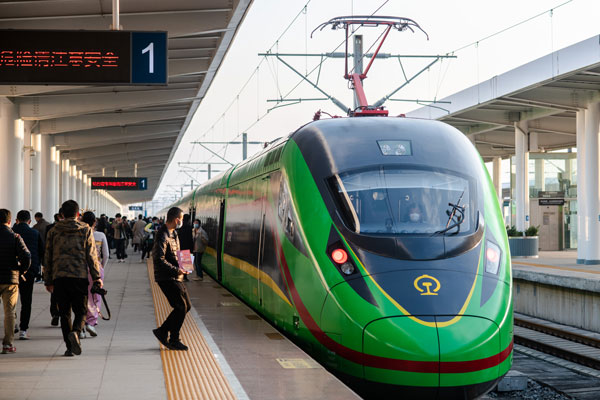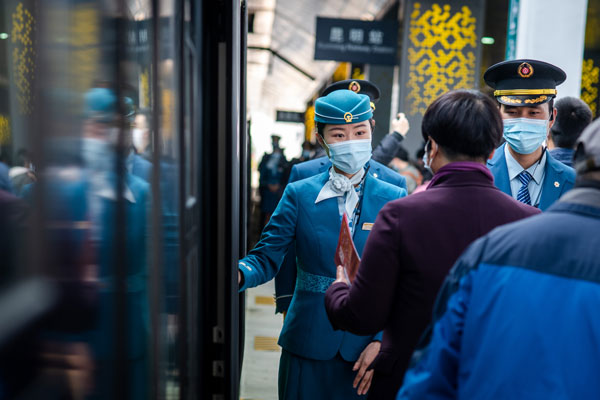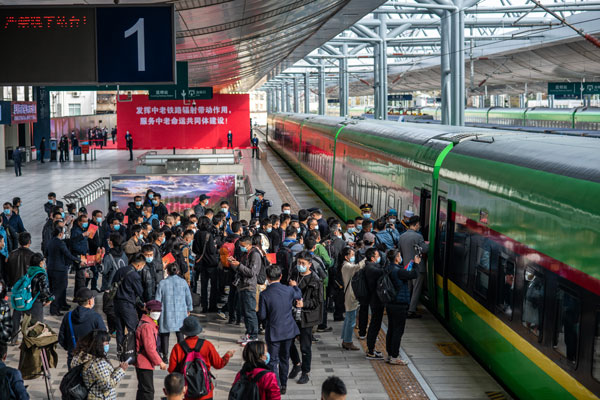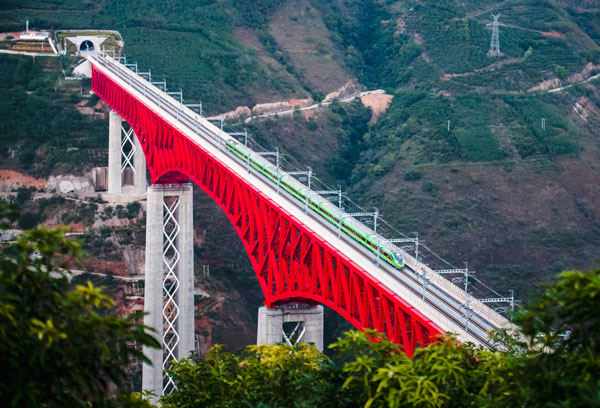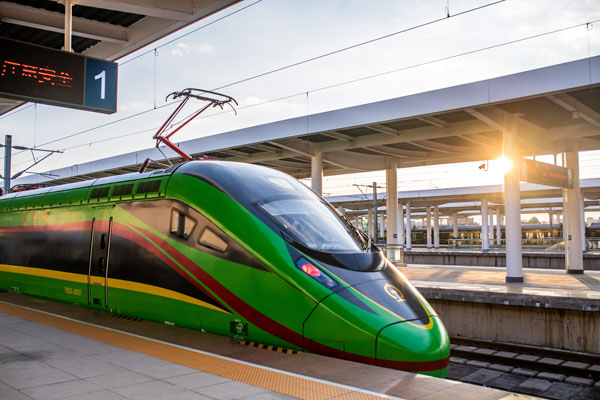
KUNMING/VIENTIANE — The China-Laos Railway, a landmark project of high-quality Belt and Road cooperation, started operation on Dec 3.
Xi Jinping, general secretary of the Communist Party of China Central Committee and Chinese president, and Thongloun Sisoulith, general secretary of the Lao People's Revolutionary Party Central Committee and Lao president, jointly witnessed the opening of the railway via video link.
The electrified passenger and freight railway runs 1,035 km, including 422 km in Laos, from the city of Kunming, Southwest China's Yunnan province, to Lao capital Vientiane.
As a docking project between the Belt and Road Initiative and Laos' strategy to convert itself from a landlocked country to a land-linked hub, it will slash the travel time between the two cities to about 10 hours.
Sleek bullet trains will travel at a speed of 160 km per hour, through mountains and valleys.
On the afternoon of Dec 3, passenger trains left Kunming and Vientiane stations respectively at the same time.
The China-Laos Railway crosses areas rich in wildlife including wild Asian elephants. Developers skirted environmentally sensitive areas, built bridges, and set up protective fences to minimize the project's impact on the environment.
Construction of the Laos section started in December 2016, and construction of the China part linking Yuxi and the border town of Mohan started in December 2015.
A total of 167 tunnels and 301 bridges were built along the new sections stretching over 900 km, after builders overcame many technical difficulties.
The railway could potentially increase aggregate income in Laos by up to 21 percent over the long term, the World Bank said in a report last year.
The section connecting Vientiane and Boten (at the northern border with China) could provide Laos with a land link to global and regional supply chains, which could make the country more attractive to investors, create new jobs, and accelerate economic growth, the report said.
Many exporters will switch to the railway from road transport, and the cost of transport through Laos could be cut by 30 to 40 percent, said Valy Vetsaphong, vice-president of the Lao National Chamber of Commerce and Industry.
As an important part of the trans-Asian railway network, the railway will serve as a "golden key" for Laos to connect with China and other ASEAN countries including Thailand and Malaysia, said Xiao Qianwen, executive manager of the Laos-China Railway Co Ltd, a joint venture based in Vientiane.
It will exert a positive impact on economic cooperation in China-ASEAN Free Trade Area and the Greater Mekong Subregion, Xiao added.
For 22-year-old Sida Phengphongsawanh, a Lao employee, the rail project will be a boon for Laos.
"Personally, the railway has given me a stable job. At the national level, the railway can drive the multi-level and all-around development of Laos," Sida said.
